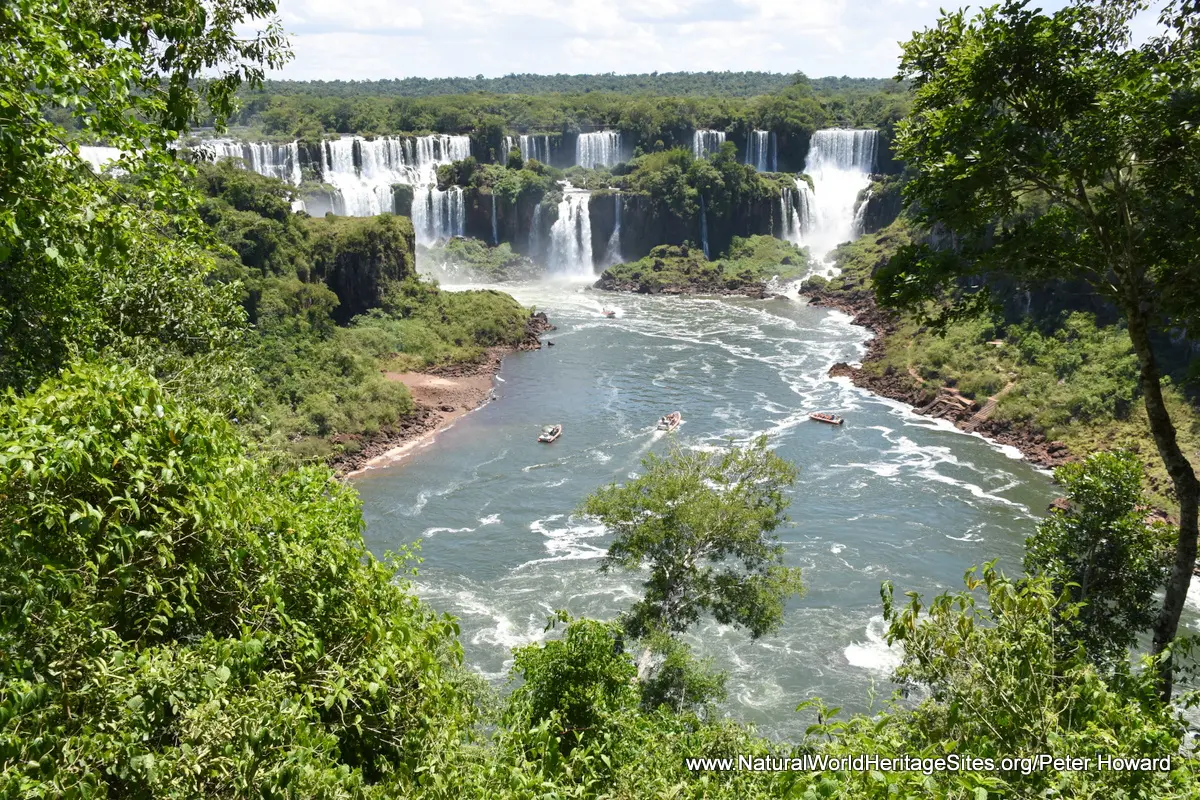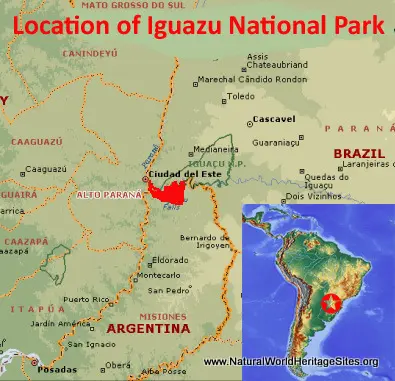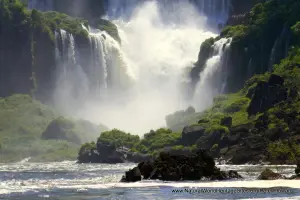EXPLORE Iguazu National Park with this slideshow, check the location map and get all the facts and information below.
For slideshow description see right or scroll down (mobile). Click to view slideshow
Location and Values: Iguazu National Park is located in northern Argentina, close to the border with Brazil and Paraguay. It includes what is, perhaps, the most spectacular complex of waterfalls in the world – a 3km stretch of thundering cascades and rapids set in a lush subtropical forest. The waterfall complex is shared with Brazil and an extensive area of the surrounding forest on each side of the border is protected within adjoining national parks (each of which is also inscribed separately on the world heritage list). This forest is one of the largest remaining remnants of the interior Atlantic Forest, a unique forest type rich in endemic species.
Conservation Status and Prospects. According to IUCN’s Conservation Outlook Assessment (2017) the conservation status of Iguazu National Park is of ‘significant concern’. The IUCN report notes current high level threats from hunting, invasive species, logging, fishing, climate change, tourism development, habitat degradation, water-borne pollutants and dams on the Upper Iguazú River. The report highlights the ongoing construction of the Baixo Iguaçu dam on the Brazilian side of the border and expresses concern over political and economic pressure to asphalt the section of Ruta Nacional 101 that runs through the site, as this would threaten the area’s biodiversity, landscape and aesthetic values.
Links:
Google Earth
UNESCO Official Website
IUCN Conservation Outlook
UNEP-WCMC Site Description
Birdlife IBA
Slideshow description
The slideshow ‘tells the story’ of Iguazu National Park, showing the spectacular falls and forest habitats, plants and animals. The photos were taken by Peter Howard during two visits, in 1991 and 2019. The slideshow starts with a short helicopter ride over the falls and surrounding forests. This provides ‘context’ for closer views of the various cascades and features seen at ground level. Apart from providing spectacular views of the falls, the over-flight demonstrates just how much the land beyond the park boundaries has been cleared for agriculture, leaving the park an isolated remnant of the once-extensive interior Atlantic Forest.
The park offers visitors a number of trails, walkways and lookouts that provide spectacular views of the various cascades, the white waters in the gorge below the falls, and the wide, placid waters of the river upstream. Whilst the falls themselves are the main attraction at the site, its outstanding importance for biodiversity can be experienced along the cliff-top walks and a number of other guided trails through the forest. The slideshow illustrates the exuberant forest vegetation and some of the iconic animals that may be encountered – colourful birds (including various species of parrots, toucans and hummingbirds), large wild cats (such as ocelot and jaguar), otters and monkeys. In the quiet backwaters, caiman may be spotted, alongside terrapins and frogs, while colourful tropical butterflies glide past with a flash of metallic blue. In the undergrowth, some of the rare endemic birds of the Atlantic Forest may be spotted, including the unique Solitary Tinamou (known locally as Macuco).
Factfile
Top 10: One of the ‘Top 10’ sites
Website Categories: Tropical & Sub-tropical Forests; Earth Features
Area: 550 km2
Inscribed: 1984
Criteria:
- Outstanding natural beauty (vii);
- Natural habitat for biodiversity (x);
- Significant number of rare, endemic and/or endangered species (x)





